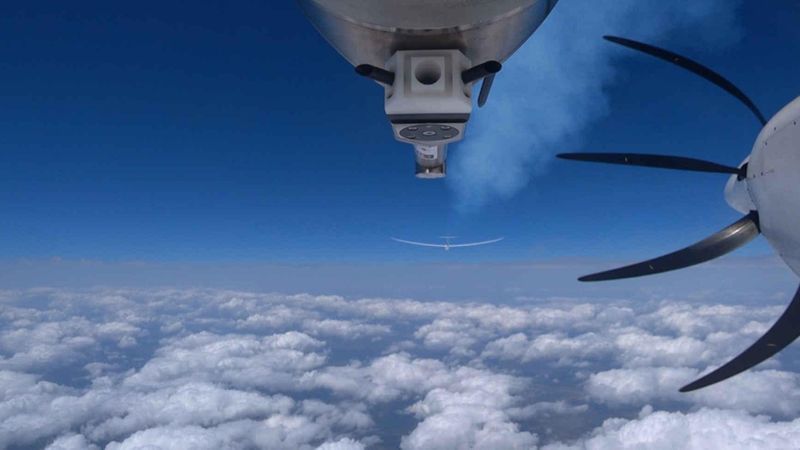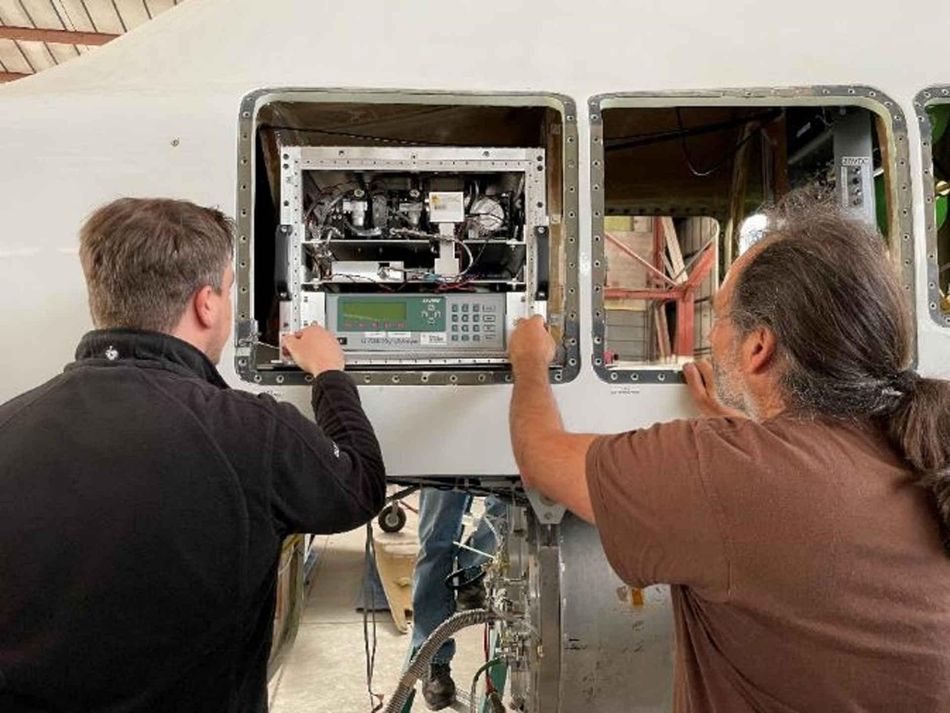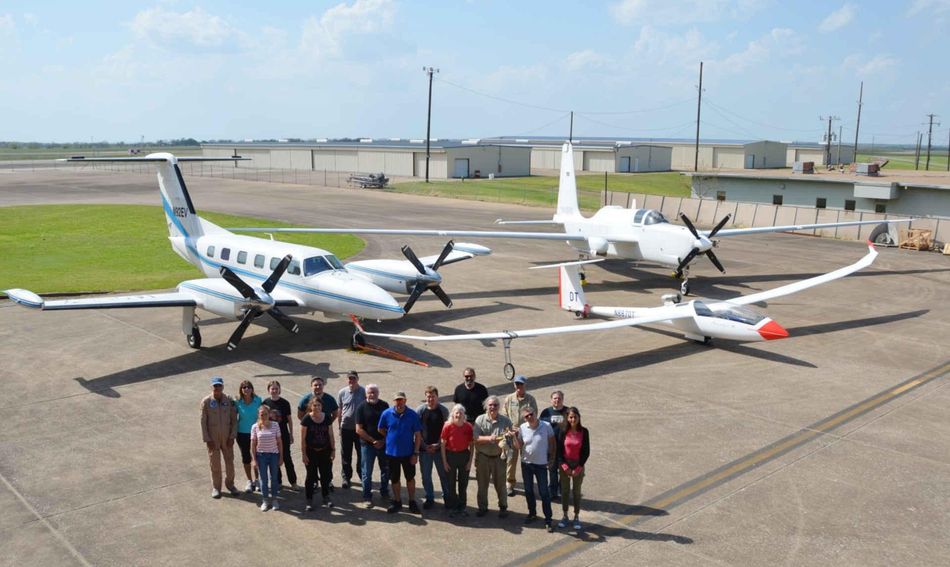Analysing the contrails of the future
DLR supports new test flight programme by Airbus and its subsidiary Airbus UpNext for CO2-emission-free flight. The 'Blue Condor' project investigates the effects of contrails from hydrogen engines.

Approaching the exhaust jet. Credit: © AV Experts, LLC. All rights reserved
Contrails are generated as a result of aircraft emissions. They could amplify the greenhouse effect in the form of long-lasting ice clouds. The soot particles from jet fuel combustion act as particularly strong condensation nuclei for cloud formation in the part of the atmosphere where cold air is present. New engine technologies and the use of sustainable aviation fuels (SAFs) offer promising approaches to significantly reduce the climate impact of contrails. To this end, the German Aerospace Center (Deutsches Zentrum für Luft- und Raumfahrt; DLR) is supporting an Airbus test flight programme, operated by its subsidiary Airbus UpNext, which is investigating for the first time contrails produced by a carbon dioxide emission-free aircraft that is powered by hydrogen. As part of the Blue Condor project, test flights are planned for the end of 2022 and in 2023 in North Dakota, USA.

Engine comparison
Two Arcus gliders operated by the Perlan project will be deployed for the test flights, one equipped with a hydrogen jet engine and the other with a conventional kerosene-powered combustion engine. To ensure comparability of the data, the test flights will be carried out in immediate succession under the same meteorological conditions.
The respective glider will be towed by an EGRETT, a high-altitude research aircraft, to an altitude of more than nine kilometres. There, the glider will ignite the engine with which it is equipped. The EGRETT, outfitted with measurement instruments, then takes on the role of chaser and flies through the contrail in close formation, which also allows for the emissions from the exhaust plume to be measured.
The aim is to measure the microphysical properties of 'hydrogen contrails' in the atmosphere for the first time. The data will contribute to a better understanding of the formation of contrails resulting from hydrogen propulsion. In this way, technologies can be developed to modify the properties of the clouds impacting the climate and further mitigate their effect. Airbus is providing the hydrogen system and equipment, including the combustion engine, and is planning the flights of the test mission together with DLR. The DLR Institute of Atmospheric Physics is responsible for the measurements and data analysis.

Revolutionising future aviation
"DLR is a world leader when it comes to researching aircraft emissions. In order to achieve climate-neutral aviation, research results must be incorporated directly into the development of new products. We are pleased to be able to support Airbus and its subsidiary with this technology transfer," says Markus Fischer, DLR Divisional Board Member for Aeronautics. Sandra Bour Schaeffer, CEO of Airbus UpNext adds: "The aviation industry is already working hard to reduce all aviation emissions by 2050, and we are proud to have international experts at our side for this next important step."
Hydrogen engines predominantly emit water vapour and nitrogen oxides. Models show that the resulting contrails could have a much smaller effect on the climate. Direct hydrogen combustion does not produce particulate matter. Experts therefore suspect that the ice particles formed tend to be larger and occur in smaller numbers than with soot emissions. As a result, their rainout occurs faster, which means that the contrails are short-lived and contribute only marginally to global warming. However, science has lacked concrete measurement data on these complex atmospheric processes so far.

If the assumptions based on models can thus be confirmed, hydrogen combustion could revolutionise aviation of the future. This is precisely why measurements at cruising altitudes are necessary because it is not clear whether the models cover all relevant processes. Hydrogen combustion also offers significant reduction potential because it does not lead to carbon dioxide emissions. Only the increased emission of water vapour into the stratosphere could counteract the mitigating climate effect of these contrails and must be taken into account in the analyses. The ‘Blue Condor measurement flights’ will provide fundamental data that will allow reliable statements on contrails to be issued for the first time.
The atmospheric researchers at Oberpfaffenhofen are using tried and tested instruments as well as instruments that were developed specifically for the mission. In particular, water vapour and ice particles as well as nitrogen oxides and aerosols are to be measured during the flight. The DLR project group H2CONTRAIL is leading from the DLR side and supplementing the measurements with targeted simulations to investigate the climate impact of contrails from hydrogen-fueled engines.
Research and industry united
The cooperation between research and industry goes far beyond the Blue Condor project. Airbus, DLR and the other stakeholders are active in several demonstration programmes, including ECLIF2, ECLIF3 (Emission and Climate Impact of Alternative Fuels) and VOLCAN (VOL avec Carburants Alternatifs Nouveaux). The common goal is to gain more precise insights into the climate benefits of contrails resulting from sustainable fuels and modern engine technologies. The Blue Condor project serves to complement these programmes. DLR is thus also supporting Airbus' efforts to develop an emission-free aircraft by 2035. This is in line with the aviation strategy set out by DLR in December 2021 for the European Green Deal: 'Towards zero-emission aviation'.